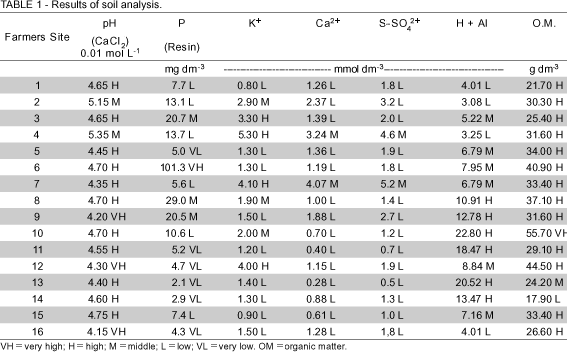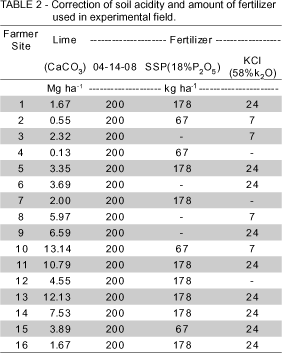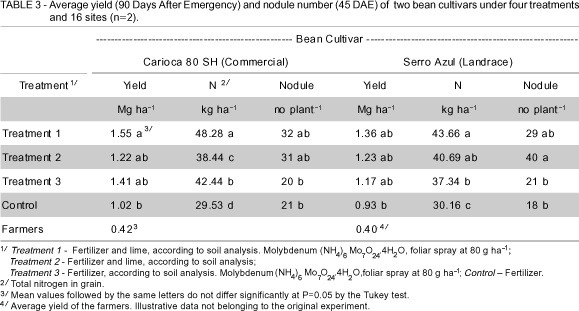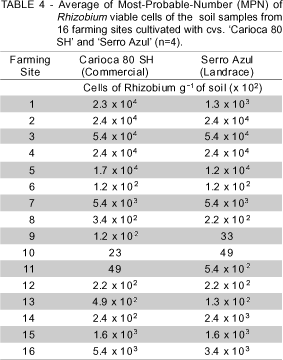The colonization of the State of São Paulo, Brazil of the northeastern region, is related to historical movements, such as "tropeirismo" (séc. XVIII and XIX) and Italian immigration (séc. XIX). The agriculture presently practices used by farmers descendent of immigrants does not differ from the techniques used at the beginning of the century. In the Cunha region of the Atlantic Rain Forest ecosystem poor bean yield associated with low fertilizer input, plant disease and soil erosion led to slash-and-burn farming. This work is an attempt at identifying sustainable farming practices that would minimize bean disease and maximize nitrogen assimilation. For that purpose soil fertility and plant cultivar were studied under standard agronomic practices to determine their effect on seed yield, total nitrogen of grain and number of root nodules. Fertilization, liming and molybdenum from 16 sites increased yield by 342% and 369% for the landrace `Serro Azul' and commercial variety `Carioca 80 SH', respectively. In addition, plants grown with fertilizer presented more nodules and more nitrogen in grain per hectare. The increase of crop yield per hectare might increment the family income and reduce deforestation of the Atlantic forest.
Phaseolus vulgaris; Rhizobium tropici; landrace; lime; molybdenum





